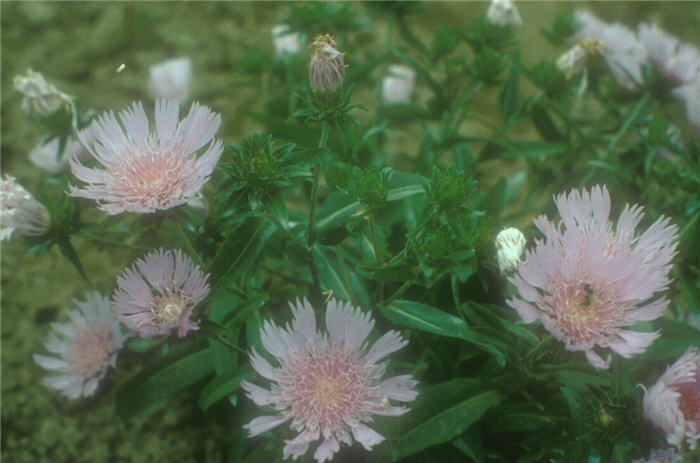| Botanical Name: Stokesia laevis | |
| Common Name: Stokes Aster |

-
Anatomy
-
Culture
-
Design
Plant Type
Perennial
Height Range
1-3'
Flower Color
Blue
Flower Season
Summer
Leaf Color
Green
Bark Color
n/a
Fruit Color
n/a
Fruit Season
n/a
Sun
Full, Half
Water
Medium, High
Growth Rate
Moderate
Soil Type
Clay, Loam
Soil Condition
Average, Rich, Well-drained
Soil pH
Neutral
Adverse Factors
n/a
Design Styles
English Cottage, Meadow
Accenting Features
Showy Flowers
Seasonal Interest
Spring, Summer
Location Uses
Perennial Border, Patio
Special Uses
Cut Flowers, Small Spaces
Attracts Wildlife
Butterflies
Information by: Stephanie Duer
Photographer:
Photographer:
-
Description
-
Notes
Not really an aster, this lovely perennial looks a cross between a Scabiosa and a Cupid's Dart. Though petaled like a daisy, they are more separated than in daisies, and also are toothed at the tips. Typically a soft, corn-flower blue, they are also sometimes found in white, soft purple, and pink. Blossoms appear in May, and intermittently until July. Foliage forms dense rosettes of bright green leaves; though evergreen in milder climates, it will usually go dormant here in our cold winters. It grows about 18 to 24 inches tall and about 12 to 18 inches wide.
Grow in average, medium, well-drained soils in full sun. Tolerates filtered sunlight, but prefers full sun. Prefers moist soils, but has surprisingly good drought tolerance. Wet soil in fall/winter is the main cause of death for this plant. A well-drained soil is essential. Make certain to refresh the mulch around it in the fall to facilitate it over-wintering. Deadhead individual spent flowers and remove spent flowering stems to encourage additional bloom.